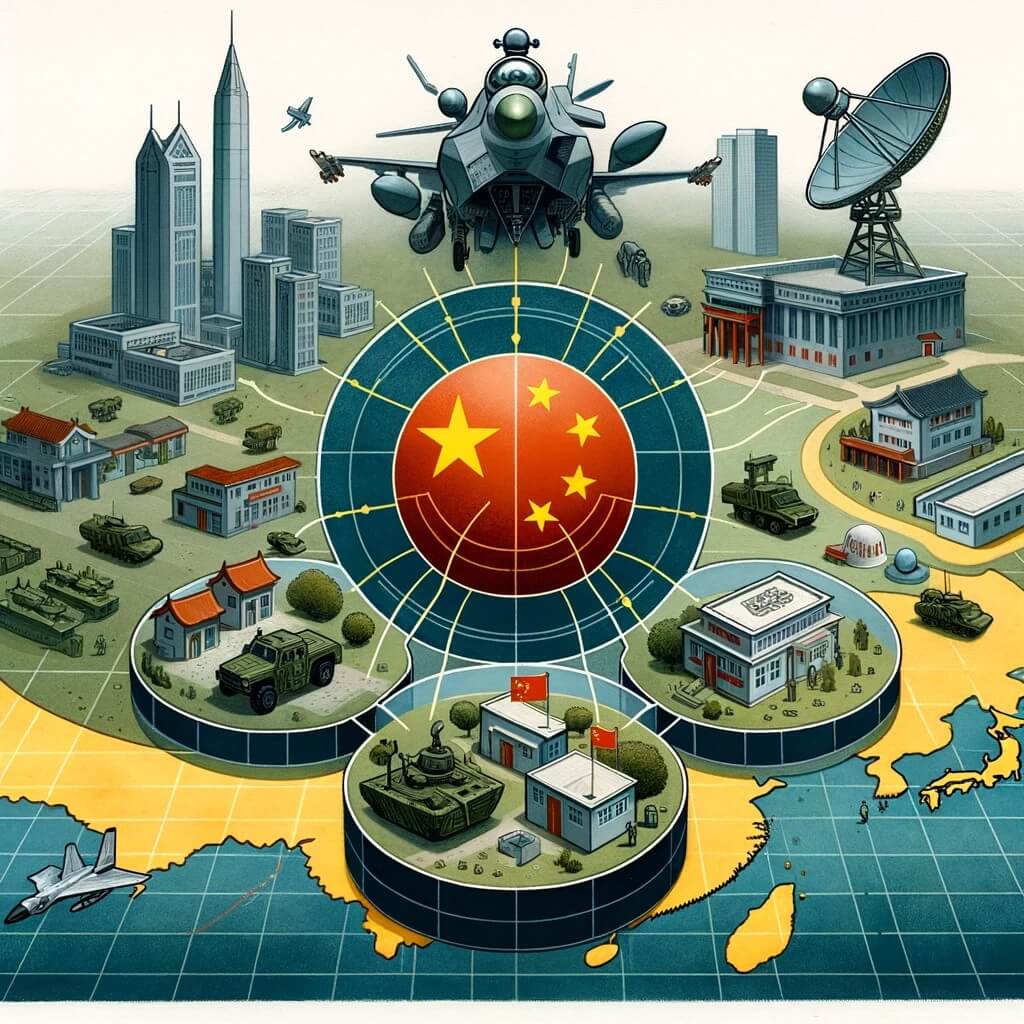In a sweeping effort to propel the People’s Liberation Army (PLA) into unparalleled technological prowess, the Chinese Communist Party (CCP) has unleashed its ambitious “Military-Civil Fusion” (MCF) strategy. This strategic blueprint, encompassing quantum computing, semiconductors, 5G, nuclear technology, aerospace technology, gene editing, and artificial intelligence, signifies a comprehensive and institutionalized approach unlike any seen before. As China positions itself on the cusp of technological dominance, the United States faces a critical juncture, torn between countering China’s military strides and safeguarding its own economic interests deeply intertwined with the Asian giant.
The rise of military-civil fusion – A global security challenge
Underpinning China’s MCF strategy is a calculated effort to intertwine military advancements with technological innovations. While the roots of MCF applications trace back to the 1980s and 1990s, it has flourished into a core national policy under the Xi presidency. The establishment of the Central Commission for Integrated Military and Civilian Development in 2017 underscores China’s unwavering commitment to this transformative agenda.
The United States, recognizing MCF as a looming concern for its Indo-Pacific interests, finds itself in a precarious position. Accusations of corporate espionage and the undermining of American companies echo through the halls of strategic discussions. Particularly vulnerable are sectors such as artificial intelligence, nuclear energy, and gene editing, each holding the potential to reshape the landscape of global warfare. As China’s MCF strategy advances, the United States risks falling behind unless swift measures are taken to bridge the technological gap.
The dual-use nature of MCF-targeted technologies presents a complex dilemma for the United States. As it seeks to counter China’s military ambitions, it grapples with the fact that these technologies, while capable of fueling dangerous weapons, are deeply integrated into the US-China trade relationship. Restrictions imposed to curb Chinese gains in these industries could trigger economic repercussions, from trade restrictions to boycott campaigns and unilateral sanctions.
Current US strategies involve measures like visa limits for exchange students and restrictions on the sale of crucial goods for MCF technologies. While effective in slowing China’s technological acquisition, these measures carry hefty consequences for US technological innovation and corporations. The recent move to limit the sale of advanced semiconductors, a crucial element for AI development, exemplifies the delicate balancing act the United States must perform.
A prudent path forward: Strengthening domestic base and international collaboration
To navigate the intricate web of MCF challenges, the United States must identify specific sectors with the highest potential to influence Chinese state behavior and the creation of dangerous weapons. Yet, measures should avoid explicitly discriminating against Chinese corporate interests, which could inadvertently accelerate China’s industrial independence.
Rather than resorting to complete decoupling, the United States should focus on reorganizing its supply chains in MCF-targeted industries, minimizing risks associated with trade while protecting technological innovation. International collaboration becomes paramount, with the establishment of guidelines and regulations to prevent China from acquiring the most destructive forms of MCF technologies.
Propositions akin to the International Committee of the Red Cross’s stance on autonomous weapon systems, allowing production with critical humanitarian guidelines, provide a model for regulating, not preventing, the production of these technologies. By adopting such an approach, the United States can curtail China’s acquisition of advanced weapons of mass destruction without direct confrontation.
As China relentlessly harnesses emerging industries to bolster its military might through MCF, the United States faces a critical juncture. The imperative lies in a strategic adjustment, fortifying its own industries, and collaborating internationally to establish guidelines for MCF-targeted technologies. How can the United States strike this delicate balance, mitigating the possibility of Chinese military superiority without provoking the CCP and risking economic repercussions?




